Originally posted on February 10, 2024 @ 5:42 pm
Are you wondering if you can use your EBT benefits to buy vegetable plants? The answer is yes! According to the USDA, SNAP participants can purchase seeds and edible plants with their benefits. This allows individuals to grow their own fresh produce at home, making their SNAP benefits go further and promoting self-reliance.
Growing your own food from seeds and plants not only stretches the value of your SNAP benefits but also promotes better nutrition. By having access to homegrown vegetables, you can ensure that you and your family are eating fresh, healthy produce that you have cultivated yourself.
Table of Contents
Key Takeaways:
- SNAP participants can buy vegetable plants and seeds with their EBT benefits.
- Growing your own food can help stretch your SNAP benefits and promote self-reliance.
- Homegrown produce is fresh, nutritious, and you have control over the use of pesticides.
- Gardening promotes better nutrition, physical activity, and involvement of the whole family.
- Check with your local SNAP agency or the USDA website for information on online purchasing options for seeds and plants.
What Plants Can I Buy With EBT?
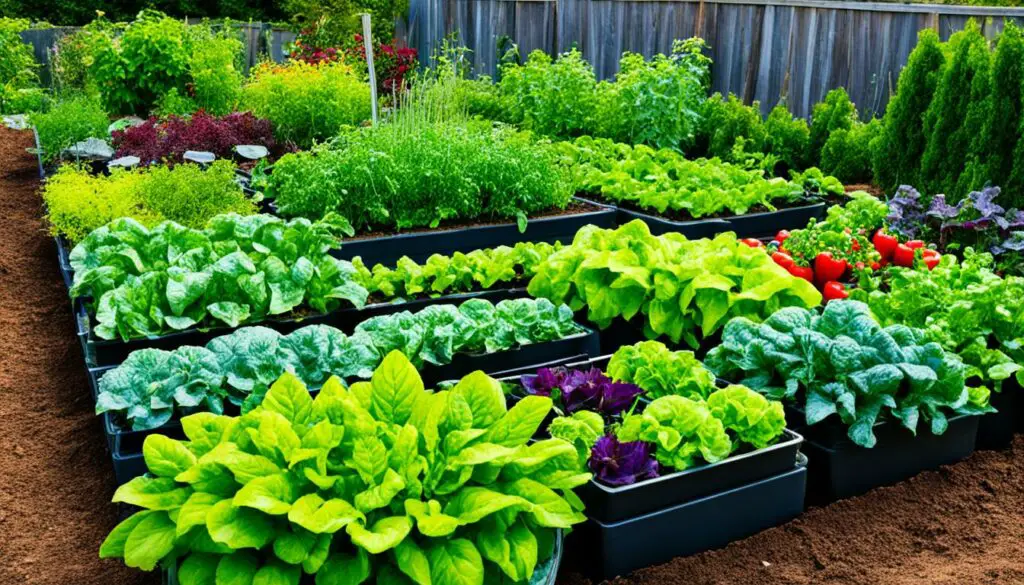
SNAP participants can buy a wide variety of plants with their EBT benefits, allowing them to grow their own food and make their benefits go further. The USDA permits the purchase of any plant that produces edible food, including vegetable plants, fruit trees, as well as roots, bulbs, and bushes that yield edible crops.
Here are some examples of vegetable plants that can be purchased with EBT:
- Potatoes
- Squashes
- Greens (such as spinach, kale, and lettuce)
In addition to vegetable plants, EBT benefits can also be used to buy fruit trees like apple trees and berry bushes. This allows SNAP participants to enjoy a wide variety of nutritious and delicious produce right from their own backyard.
“Growing your own food is not only a cost-effective way to stretch your EBT benefits but also empowers individuals with self-reliance and promotes healthier eating habits.”
Where Can I Buy Plants with EBT Benefits?
Plants can be purchased with EBT benefits at all SNAP retailers, including farmers’ markets. However, not all stores may be aware that plants and seeds are eligible for SNAP. To ensure acceptance, it may be helpful to educate cashiers about the eligibility of these items. Supermarkets and some farmers’ markets are the best places to find vegetable plants accepted with EBT. EBT participants can confidently shop for a variety of vegetable plants available for purchase with EBT benefits.
Benefits of Growing Your Own Food
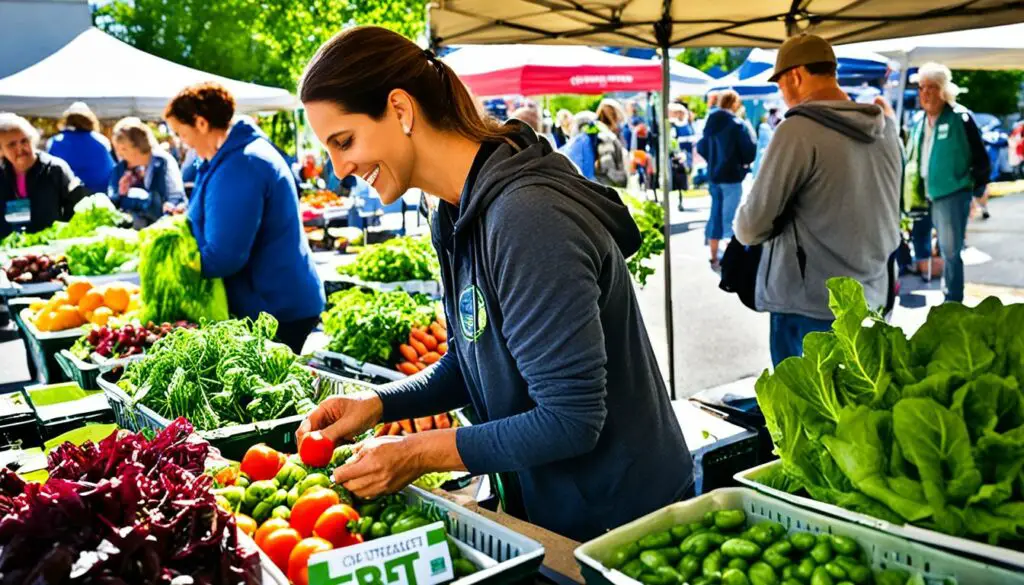
Growing your own food offers several benefits for SNAP recipients. When SNAP benefits are used to buy seeds and plants, individuals can make their benefits last longer by growing their produce at home. The USDA estimates that every dollar spent on seeds and fertilizer can yield an average of $25 worth of produce. Additionally, growing your own food promotes nutrition, self-reliance, and encourages healthier eating habits.
| Benefits of Growing Your Own Food |
|---|
| Economic: Growing food at home using EBT benefits can maximize their value by yielding a higher return on investment. The cost of purchasing seeds and plants is significantly lower than buying produce from stores, allowing individuals to stretch their benefits and save money in the long run. |
| Nutritional: Homegrown fruits and vegetables are generally fresher and more nutritious than store-bought produce. With control over the growing process, SNAP recipients can choose organic methods, avoiding the use of harmful pesticides and ensuring higher-quality food for themselves and their families. |
| Self-Reliance: By growing their own food, SNAP recipients become less reliant on external food sources. Gardening empowers individuals to take control of their food supply, reducing dependence on SNAP benefits and providing a sense of self-sufficiency. |
| Health Benefits: Engaging in gardening activities promotes physical activity, helping SNAP recipients lead more active and healthier lifestyles. Consuming homegrown produce also encourages a diet rich in fruits and vegetables, improving overall nutrition and well-being. |
“Growing your own food is a fulfilling and rewarding experience. Not only does it save you money, but it also connects you with nature and the food you consume. It’s a sustainable and enjoyable way to make the most out of your EBT benefits.” – Jane Smith, avid gardener and SNAP recipient
Getting Started with Gardening
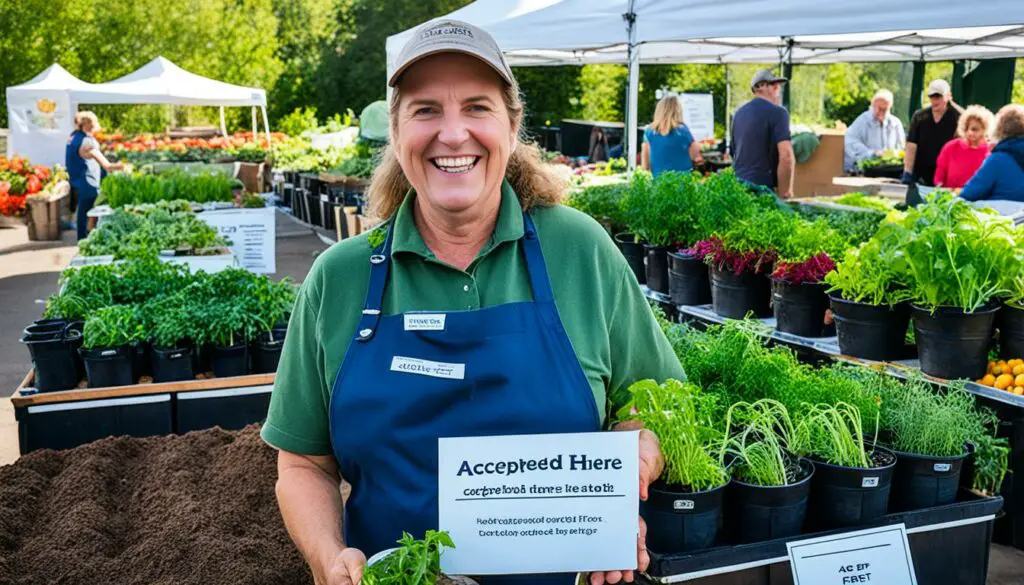
For SNAP recipients who are new to gardening, there are several resources available to help get started. Whether you have a limited budget or limited outdoor space, you can still enjoy the benefits of starting a vegetable garden.
Here are some tips to help you get started:
1. Community Gardening
Consider joining community gardening classes and clubs. These resources can provide valuable support and education, helping you learn the essentials of gardening from experienced enthusiasts. You can connect with like-minded individuals, exchange ideas, and get hands-on experience in a shared garden space.
2. Indoor Gardening Classes
If you live in an urban area with limited outdoor space, indoor gardening can be an excellent option. Look for indoor gardening classes or workshops that focus on techniques like container gardening and growing herbs and vegetables indoors. You’ll learn how to maximize your space and create a thriving garden right in your own home.
3. Donating Space
If you don’t have access to adequate outdoor space, consider reaching out to organizations that support gardening initiatives. Some non-profit organizations have programs specifically designed for SNAP participants, offering space and resources for gardening. Donating space allows those with limited resources to enjoy the benefits of gardening and grow their own fresh produce.
4. Engage the Whole Family
Gardening can be a fun and rewarding activity for the whole family. Get your children involved by assigning them age-appropriate tasks and teaching them about the importance of fresh food. Encourage their creativity by creating recipe books together, showcasing delicious dishes made with homegrown ingredients.
| Benefits of Getting Started with Gardening for SNAP Recipients | |
|---|---|
| 1. Healthier, Cost-Effective Food | 2. Sense of Achievement and Self-Reliance |
| By growing your own fruits and vegetables, you’ll have access to fresh, nutritious food without the high costs associated with store-bought produce. It’s a budget-friendly way to enjoy a variety of healthy options. | Gardening provides a sense of accomplishment and self-reliance, as you cultivate your own food from seeds to harvest. It promotes a connection to nature and a greater appreciation for the food we consume. |
| 3. Environmental Sustainability | 4. Stress Relief and Mental Well-being |
| Gardening contributes to a sustainable lifestyle by reducing food transportation and promoting organic practices. You’ll also have control over pesticides and can opt for eco-friendly alternatives. | Gardening is a great way to reduce stress and improve mental well-being. Being in nature, caring for plants, and experiencing the growth process can have a positive impact on overall mood and emotional health. |
With these resources and benefits in mind, starting a home garden on a budget or limited space becomes an accessible and rewarding endeavor. Embrace the joy of growing your own food and reap the many rewards it offers.
Can I Use EBT to Buy Seeds and Plants Online?
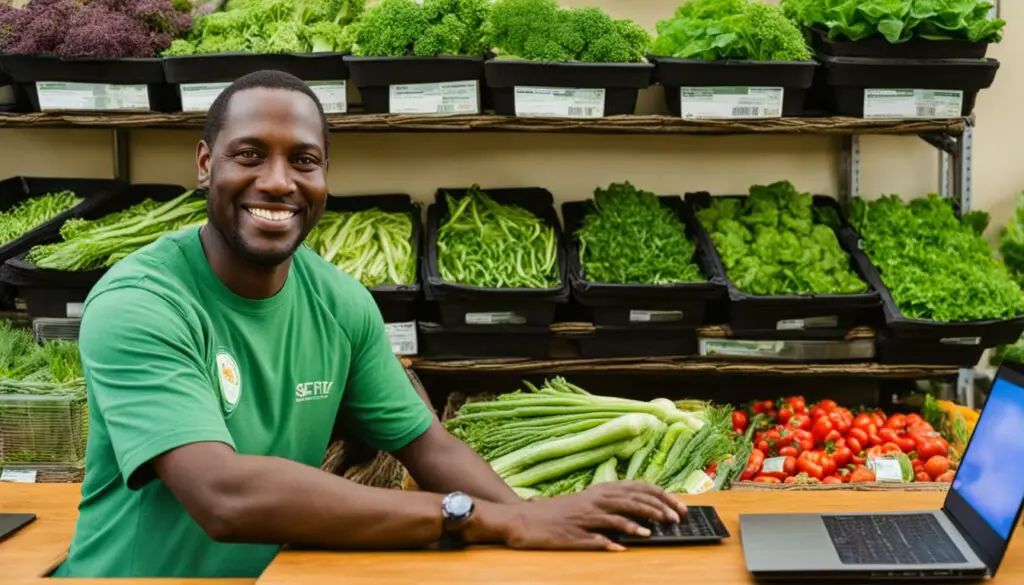
While SNAP benefits can be used to buy seeds and plants in person at authorized retailers, online purchases with EBT are more limited. Currently, USDA-approved online retailers for EBT purchases are limited, but some states are piloting online purchasing programs. Checking with local SNAP agencies or the USDA website can provide the most up-to-date information on online purchasing options.
To maximize the availability of online retailers for EBT purchases, the USDA is actively working to expand the program. This will provide SNAP participants with greater convenience and access to a wider range of products for their gardening needs.
As the program expands, online retailers will be required to meet the USDA’s standards and guidelines to ensure that they accept EBT payments and offer eligible products. This includes a variety of seeds and plants that can be purchased with SNAP benefits. It is important to note that not all online retailers currently accept EBT for plant and seed purchases, so it’s crucial to check for USDA approval before making online purchases with EBT.
To stay informed about the latest updates and options for EBT online purchases, SNAP participants can regularly visit the USDA website or contact their local SNAP agencies.
| Pros | Cons |
|---|---|
| Convenient for those who prefer online shopping | Currently limited availability of USDA-approved online retailers |
| Expanded access to a wider range of products | Some online retailers may not accept EBT payments for plant and seed purchases |
| Increased convenience for individuals with limited mobility | Requirements for USDA approval may limit the number of online retailers who accept EBT |
While online purchasing options for EBT-eligible seeds and plants are still in development, it’s worthwhile to explore other avenues for purchasing gardening supplies. Farmers’ markets, local nurseries, and supermarkets that accept EBT remain reliable options for purchasing seeds and plants in person.
How to Stretch Your EBT Benefits Through Gardening
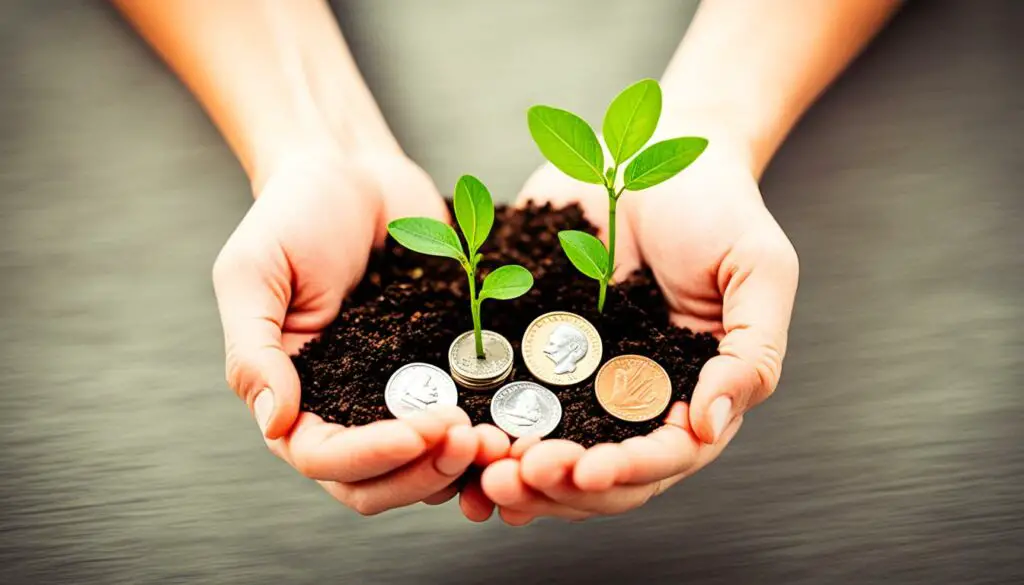
Growing your own food can be a cost-effective way to maximize your EBT benefits and make them go further. By investing in seeds and plants, you can reduce your reliance on store-bought produce and save money in the long run. Gardening not only helps stretch your SNAP benefits, but it also provides numerous other benefits for you and your family.
One of the key advantages of gardening is the ability to grow a variety of foods that may not be affordable otherwise, especially during times of inflation when prices for certain produce items can rise. By growing your own fruits, vegetables, and herbs, you can enjoy a diverse and nutritious diet without straining your budget.
“By growing your own food, you can save money, eat healthier, and have fun in the process.”
Save Money by Growing Your Own
The cost savings of growing your own food can be significant. According to the USDA, every dollar spent on seeds and fertilizer can yield an average of $25 worth of produce. That means your investment in gardening supplies can provide a bountiful harvest that far exceeds the value of your initial purchase.
Additionally, by avoiding store-bought produce, you can save on the transportation and packaging costs associated with commercially grown food. With gardening, you have direct access to fresh, organic produce without the added expenses.
Improve Nutrition and Health
When you grow your own food, you have control over the use of pesticides and can choose to grow your crops organically. This allows you to enjoy healthier and safer produce. Plus, homegrown fruits and vegetables are often more flavorful and packed with nutrients, as they are allowed to ripen naturally on the vine.
Gardening also promotes physical activity, as tending to your plants requires regular movement and bending. It provides an opportunity to get outdoors, breathe fresh air, and soak up some vitamin D. Additionally, involving your family in the gardening process can foster healthier eating habits and create lasting memories.
With all these benefits in mind, now is the perfect time to start a garden and stretch your EBT benefits. Whether you have a spacious backyard or limited space on a balcony or windowsill, there are options for everyone. Gardening doesn’t have to be complicated; even simple herbs or potted vegetables can make a difference in your grocery budget and well-being.
Tips for Buying Plants and Seeds with EBT
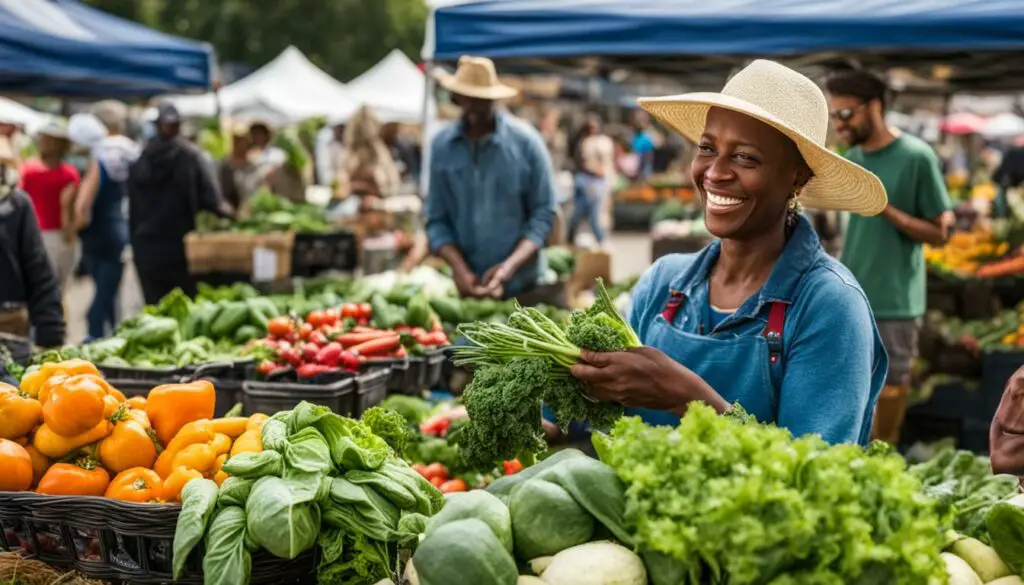
If you’re considering purchasing plants and seeds with your EBT benefits, there are a few important tips to keep in mind. Ensuring that the retailer you are buying from is authorized to accept EBT is crucial. Some cashiers may not be aware of the eligibility of plants and seeds, so it could be helpful to educate them about the USDA guidelines.
Starting your search at familiar supermarkets that accept EBT is recommended. If these stores don’t sell plants or seeds, don’t worry! You can utilize the USDA SNAP Retailer Locator to find alternative retailers in your area that do offer EBT-approved plants and seeds.
Helpful Tips for Buying Plants and Seeds with EBT:
- Confirm that the retailer accepts EBT for plant and seed purchases.
- Educate cashiers about the eligibility of plants and seeds under the EBT program.
- Start your search at supermarkets that accept EBT benefits.
- Utilize the USDA SNAP Retailer Locator to find alternative retailers if necessary.
- Ask store staff for assistance if you need help locating EBT-approved plants and seeds.
By following these tips, you can navigate the process of buying plants and seeds with your EBT benefits more effectively and ensure a successful gardening experience.
| Benefits | Tips |
|---|---|
| Access to fresh and nutritious food | Educate cashiers about EBT eligibility |
| Save money in the long run | Start at familiar supermarkets |
| Stretch your EBT benefits | Use the USDA SNAP Retailer Locator |
| Promote self-reliance and better nutrition | Ask store staff for assistance |
Benefits of Growing Your Own Food
Growing your own food has numerous benefits that go beyond stretching your EBT benefits. Let’s explore the advantages of home gardening:
- Cost Savings: Homegrown produce is typically cheaper than store-bought options. By growing your own food, you can save money on grocery bills and reduce your overall expenses.
- Healthier Food: When you grow your own food, you have control over the use of pesticides and fertilizers. This allows you to prioritize organic and sustainable gardening practices, resulting in healthier and more nutritious fruits and vegetables.
- Natural Ripening: Store-bought produce is often picked before it fully ripens to prolong shelf life. In contrast, homegrown food can be picked at the peak of ripeness, enhancing both flavor and nutritional value.
- Physical Activity: Gardening is a fantastic form of exercise. Digging, planting, and maintaining your garden can help you stay active and improve your physical fitness.
- Family Bonding: Gardening provides an opportunity for the whole family to get involved. Whether it’s planting seeds, watering, or harvesting, gardening can be a fun and rewarding activity that brings everyone together.
By embracing home gardening, you can reap these benefits and more while enjoying the satisfaction of growing your own fresh and healthy food.
Starting Your Own Home Garden
If you’re looking to embark on the journey of starting a home garden, you’ll be pleased to know that it can be done on a budget and with limited space. Whether you have a backyard oasis or just a small balcony, there are options available to turn your space into a flourishing garden.
For those with limited outdoor space, indoor gardening can be a fantastic solution. Utilizing containers and windowsills can transform your home into a vibrant green space. Not only does indoor gardening make the most of limited space, but it also allows you to enjoy the beauty of plants all year round.
When starting your home garden, it’s essential to choose the right plants for your area and climate. Research which plants thrive in your particular region and consider factors such as sunlight, temperature, and humidity. By selecting plants that are well-suited to your environment, you’ll set yourself up for success and increase the chances of a bountiful harvest.
Investing in basic garden tools is another crucial step when starting your garden. A set of gardening essentials such as a trowel, garden fork, and pruners will help you tend to your plants with ease. These tools will come in handy for planting, weeding, and maintaining your garden throughout the growing season.
One of the essential elements of a successful garden is good soil. Whether you’re tilling your backyard or using containers indoors, ensuring the quality of the soil is vital. Rich, fertile soil provides the necessary nutrients for plants to thrive and grow. If you don’t have access to natural soil, consider purchasing a high-quality potting mix or compost to create the optimal growing environment.
By following these tips, you’ll be well on your way to starting a flourishing home garden. Whether you’re growing herbs, vegetables, or flowers, the joy of nurturing and witnessing the growth of your plants is immensely gratifying. So grab your gardening gloves and get started on your green thumb adventure today!
Harvesting and Enjoying Your Homegrown Food
Once your home garden is established, the joy of harvesting and enjoying your homegrown food begins. There’s something incredibly rewarding about reaping the fruits of your labor and savoring the flavors of produce you’ve grown with your own hands. Not only does it provide a sense of accomplishment, but it also allows you to connect with nature and appreciate the journey from seed to plate.
Gardening is an art that allows you to witness and participate in the miracle of life. It’s a journey that takes you closer to the cycle of seasons, teaching patience, gratitude, and the value of hard work.
Knowing When to Harvest
Each plant has its own cues that indicate when it’s ready to be harvested. Some vegetables, like tomatoes and peppers, are best picked when they are fully ripe and have reached their vibrant colors. Others, such as leafy greens and herbs, can be harvested continuously by picking a few outer leaves or sprigs at a time, allowing the plant to keep growing.
It’s important to familiarize yourself with the specific harvesting guidelines for the crops you’re growing. This knowledge ensures that you pick the food at its peak flavor and quality. Observation is key, as you’ll notice changes in texture, color, and size that signal maturity.
Enjoying the Fruits of Your Labor
After harvesting your homegrown food, it’s time to savor the flavors and embark on culinary adventures. Freshly picked produce is bursting with nutrients and flavors that can elevate your meals to a whole new level.
Consider adding your homegrown vegetables to salads, stir-fries, soups, and sauces. Experiment with different cooking techniques, spices, and herbs to enhance the natural taste of your bountiful harvest. And don’t forget to share your creations with family and friends, spreading the joy of homegrown goodness.
By incorporating the fruits of your labor into your daily meals, you’ll not only enjoy delicious and nutritious food but also develop a deep appreciation for the process of growing food from seed to table.
So gather your freshly harvested produce, roll up your sleeves, and let your imagination run wild in the kitchen as you delight in the rewards of your hard work and dedication.
Conclusion
SNAP participants can indeed buy vegetable plants with their EBT benefits. The USDA allows participants to purchase seeds and edible plants, offering a unique opportunity to stretch their benefits while promoting self-reliance and healthier eating habits.
By utilizing their EBT benefits for gardening, SNAP recipients can grow their own fresh produce, making their benefits go further and improving their overall well-being. The ability to buy vegetable plants with EBT empowers individuals to take control of their nutrition and become more self-sustainable.
Growing food from seeds and plants not only stretches the value of SNAP benefits but also encourages a deeper connection to the food we eat. It fosters an appreciation for the process of growing, harvesting, and enjoying homegrown produce. By investing in vegetable plants with EBT, individuals can cultivate a more vibrant and nutritious diet while making the most of their assistance.
FAQ
Can I buy vegetable plants with EBT benefits?
Yes, SNAP participants can use their benefits to purchase vegetable plants and other edible plants according to the USDA guidelines. This allows individuals to grow their own fresh produce at home, making their SNAP benefits go further.
What plants can I buy with EBT?
SNAP participants can buy any plant that produces edible food with their EBT benefits. This includes vegetable plants, fruit trees, and other edible plants like roots, bulbs, and bushes. For example, you can purchase vegetable plants like potatoes, squashes, and greens, as well as fruit trees like apple trees and berry bushes.
Where can I buy plants with EBT benefits?
Plants can be purchased with EBT benefits at all SNAP retailers, including farmers’ markets. However, not all stores may be aware that plants and seeds are eligible for SNAP. To ensure acceptance, it may be helpful to educate cashiers about the eligibility of these items. Supermarkets and some farmers’ markets are the best places to find plants that can be purchased with EBT.
What are the benefits of growing your own food with EBT?
Growing your own food offers several benefits for SNAP recipients. When SNAP benefits are used to buy seeds and plants, individuals can make their benefits last longer by growing their produce at home. Additionally, it promotes self-reliance, resulting in better nutrition and healthier eating habits.
How can I get started with gardening on a budget?
For SNAP recipients who are new to gardening, there are several resources available to help get started. Community gardening classes and clubs, as well as indoor gardening classes for urban areas, can provide support and education. Organizations may also consider donating space to SNAP participants who don’t have room for gardening. Encouraging participation from families and creating recipe books can make gardening a fun and rewarding activity for all.
Can I use EBT to buy seeds and plants online?
While SNAP benefits can be used to buy seeds and plants in person at authorized retailers, online purchases with EBT are more limited. Currently, USDA-approved online retailers for EBT purchases are limited, but some states are piloting online purchasing programs. Checking with local SNAP agencies or the USDA website can provide the most up-to-date information on online purchasing options.
How can I stretch my EBT benefits through gardening?
Growing your own food can help stretch your SNAP benefits and make them go further. By investing in seeds and plants, individuals can reduce their reliance on store-bought produce and save money in the long run. Additionally, gardening allows for a variety of foods that may not be affordable otherwise.
What are some tips for buying plants and seeds with EBT?
When purchasing plants and seeds with EBT, it’s important to ensure that the retailer is authorized to accept EBT. Some cashiers may not be aware of the eligibility of plants and seeds, so it may be helpful to educate them about the USDA guidelines. Starting at familiar supermarkets that accept EBT is recommended, and if they don’t sell plants, utilizing the USDA SNAP Retailer Locator can help find alternative retailers that do.
What are the benefits of growing your own food?
Growing your own food has several benefits beyond stretching your EBT benefits. It can lead to cost savings, as homegrown produce is typically cheaper than store-bought. Additionally, homegrown food is healthier, as you have control over the use of pesticides and can let fruits and vegetables ripen naturally. Gardening also promotes physical activity and provides an opportunity for the whole family to get involved.
How do I start my own home garden?
Starting a home garden can be done on a budget and with limited space. Indoor gardening is an option for those with limited outdoor space, using containers and windowsills. Choosing the right plants for your area and investing in basic garden tools can set you up for success. Good soil, whether tilled in your backyard or purchased, and compost can help ensure the quality of your garden.
How do I harvest and enjoy my homegrown food?
Once your home garden is established, the joy of harvesting and enjoying your homegrown food begins. Knowing when to harvest each plant and how to prepare it can enhance the experience. Utilizing fresh produce in meals can lead to healthier eating habits and a greater appreciation for the food you’ve grown yourself.
Can you buy vegetable plants with EBT benefits?
Yes, SNAP participants can buy vegetable plants with their EBT benefits. The USDA allows participants to purchase seeds and edible plants, which can help stretch their benefits, promote self-reliance, and foster healthier eating habits.
Source Links
- https://standupwireless.com/blog-can-i-buy-plants-with-snap-a-guide-to-growing-your-own-food/
- https://www.usda.gov/media/blog/2011/07/06/using-snap-benefits-grow-your-own-food
- https://finance.yahoo.com/news/snap-ebt-card-buy-seeds-163503186.html
See also:
Leave a Reply